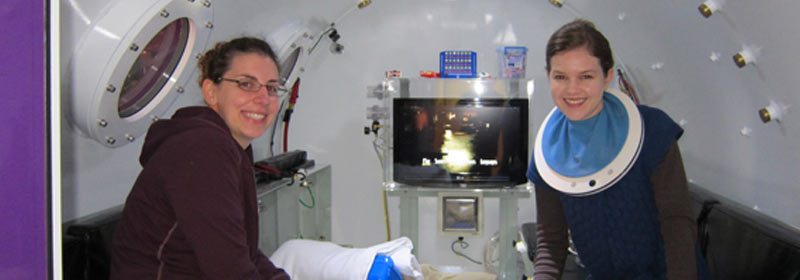What Happens When You’re Told There’s No Cure?
When you’re 27 years old you feel like you have the rest of your life ahead of you. You never expect to hear that you have a life threatening condition. In July 2011, Amanda’s world was turned upside down when she discovered that the odd symptoms she had been experiencing for almost a year were the onset of Multiple Sclerosis (MS), a debilitating disease for which there is no known cure.
Multiple Sclerosis affects the ability of nerve cells in the brain and spinal cord to communicate with each other effectively. The body’s immune system attacks and damages its own nerves. When the nerves are damaged they can no longer effectively conduct signals. Almost any neurological symptom can appear with the disease, and often progresses to physical and cognitive disability. After experiencing a buzzing sensation in her tailbone for several months, Amanda woke up one morning numb from the middle of her waist down.
The next five months were tenuous and Amanda’s symptoms continued to progress. When she rubbed her feet together it felt as if there were spikes stabbing at her. Her back would go numb after taking a shower as the nerves became confused and sent improper signals to her brain. The numbness in her body made it difficult to sit at work all day. She would need to come home and lay on the couch on her stomach all night in order to remain comfortable. She began experiencing a sensation called binding, where her waist legs, feet and toes felt as if they had ropes and wires wrapped around them, constricting tighter and tighter.
By the time Amanda was finally diagnosed with MS, walking was difficult and she was no longer able to drive a car as she could not feel her feet on the pedals. She began the standard treatment for MS by receiving steroids in hopes of reducing her symptoms. The steroids made her feel weird and caused her mind to race. Unfortunately, after a long week in the hospital, her symptoms had not improved as well as had been hoped and she went home feeling worse than before treatments began. Amanda’s energy level began to drop and extreme fatigue became difficult to overcome. She could no longer work and had to go on short term disability.
Thankfully Amanda’s story doesn’t end there. She began researching additional treatment options and discovered Hyperbaric Oxygen Therapy (HBOT). Over the past two decades, international medical research has demonstrated that HBOT can play an extremely effective role in the treatment of Multiple Sclerosis. In many European countries, HBOT is now considered an integral part of the MS treatment program. In Britain alone, over 10,000 MS patients have received HBOT from the more-than 60 centers dedicated to treating Multiple Sclerosis.
Hyperbaric Oxygen Therapy should begin as soon as practical and preferably before irreversible lesions have become established. This does not mean that patients with long-term MS will not benefit; but it does mean that time is a factor. In a recent publication in the prestigious New England Journal of Medicine researchers demonstrated significant objective improvements in 70% of patients treated.
After completing a round of 40 HBOT treatments Amanda is beginning to feel like herself again. Feeling is returning to her legs and feet. She is walking independently and has started driving again. Her energy has increased dramatically and her family is amazed at the changes they have seen take place in her. She has returned to work and is ready to resume her normal life.
Thanks to Hyperbaric Oxygen Therapy at Sara’s Garden, Amanda has her life back. No matter what you’ve been told, there is hope… for this and many other conditions. HBOT is treatment without drugs… without surgery… without pain.








